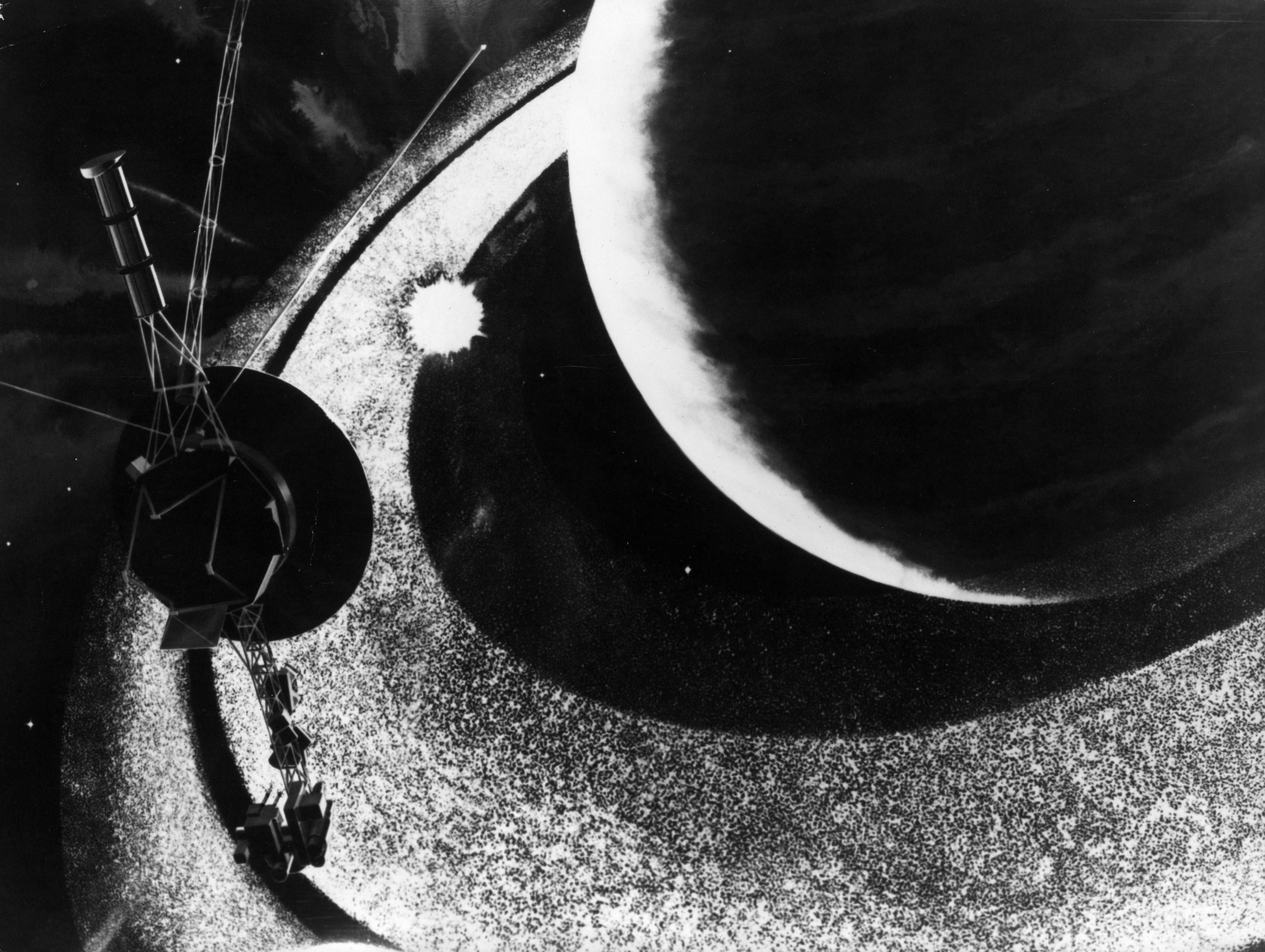Voyager 1 may be nearly 50, but it’s still bringing us surprises from the very edge of our solar system
The spacecraft, located more than 24 billion kilometres away, was feared lost to the cosmic ocean after decades of travel. But, thanks to a daring feat of human ingenuity from Nasa scientists, the Voyager is now back in contact with Earth, writes Andrew Griffin


Voyager 1 – and its sibling, Voyager 2 – were always meant to be a testament to humanity’s ingenuity. When they left Earth in the summer of 1977, they did so carrying a record that was supposed to be a message to anyone who found it.
It was intended to “communicate a story of our world to extraterrestrials”, Nasa says. The record itself includes instructions on how to play it, and anyone who did would find 115 images including information intended to show what our planet is like and how its inhabitants lived, ate and travelled.
It was a message of hope about humanity, said Carl Sagan, who led the committee that decided on its contents. “The spacecraft will be encountered and the record played only if there are advanced spacefaring civilizations in interstellar space,” he said. “But the launching of this bottle into the cosmic ocean says something very hopeful about life on this planet.”
If you needed a message of hope closer to home, however, then you would have found it in Pasadena, California, over the weekend. There, engineers were waiting for their own message – one from Voyager 1 to confirm it was safe.
Researchers had been concerned about the spacecraft since November, when the messages that it sends back to Earth turned into nonsense. It was sending a repeating, meaningless pattern as if it had become stuck.
Months later, engineers confirmed that the problem was related to a computer on board Voyager, known as the flight data subsystem or FDS. That takes science and engineering data from the spacecraft and packages it up so that it can be sent back down in a meaningful way to Earth.
The problem related to one single chip in the FDS, which contained some of its computer’s software code. The chip had broken, and therefore so had the data.
But Voyager now sits more than 24 billion kilometres from Earth, further away than Pluto and the most distant human-made object ever made. A trip to the repair shop would be impossible.
Instead, Nasa engineers divided up the important bits of code and moved them elsewhere in the FDS, making other parts of the computer pick up the extra work that would have been done by the broken chip. That was a complicated process because it also meant updating all of the spacecraft’s code so that it knew where the altered parts of the code had been moved to.

It was also a complicated process because Voyager is so very far away. Even at the speed of light, it takes just under a full day for messages to reach Voyager 1 – and another day for them to come back.
And so, on 18 April, engineers flung that code into space and hoped that it would work. On 20 April, the message came back – and, for the first time in months, it made sense.
Nasa had fixed its spacecraft. Humanity’s most long-range software update – on a computer more than 46 years old – was a success.
But Voyager 1’s continued operation as the longest-running spacecraft ever made was not only an exercise in engineering wizardry and nostalgia. The two Voyager spacecraft continue to be incredibly useful to Nasa, and losing it might have meant losing some of our most important information about the very edges of our solar system.
When the Voyagers set off from Earth, they did so with the aim of exploring what now looks like the relatively nearby planets of the outer solar system. Within a couple of years, they had visited Jupiter and Saturn, their primary mission was declared finished in 1980, and by the late 1980s, they had flown beyond the orbit of Pluto and thereby out of the reach of the planets of the solar system.

In 1990, it took the famous Pale Blue Dot image that shows the Earth being less than a pixel in size. Those images – taken on Valentine’s Day – were the last images taken by the Voyager spacecraft, and represented a look at our solar system as seen from the outside.
In one sense, they represented the end of the Voyager spacecraft’s mission. Now in one sense outside of the solar system, their work to study distant planets was over.
But a whole new mission was about to begin. It is now flying out into space at almost 40,000 miles per hour, out into “interstellar space”.
Out there, they are used to study the “heliosphere”, or the giant bubble that comes out of the Sun and wraps around the planets that surround it. All of the data that still returns from the two spacecraft is helping researchers understand the space beyond the planets in ways that would otherwise be impossible.
Even at the rate they are going, however, the Voyager spacecraft are in one sense still within our solar neighbourhood. They won’t leave the Oort Cloud – a huge set of small icy objects that surround our Sun – for another 30,000 years.
Voyager 1 and 2 will still, it seems, be with us for a long while yet.





Join our commenting forum
Join thought-provoking conversations, follow other Independent readers and see their replies
Comments